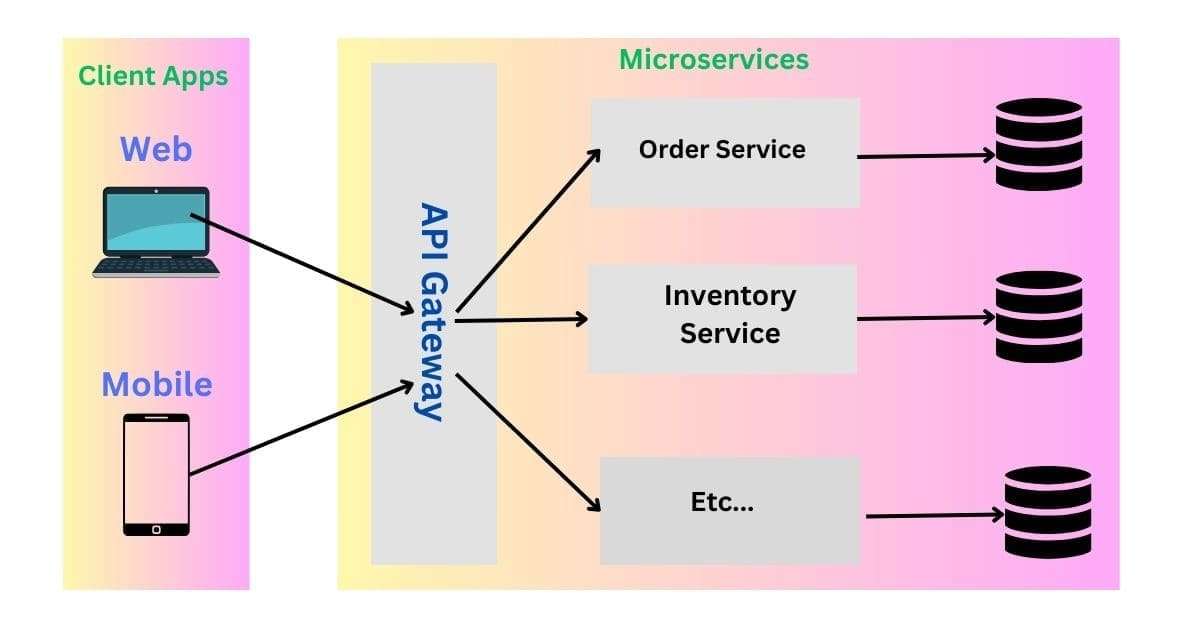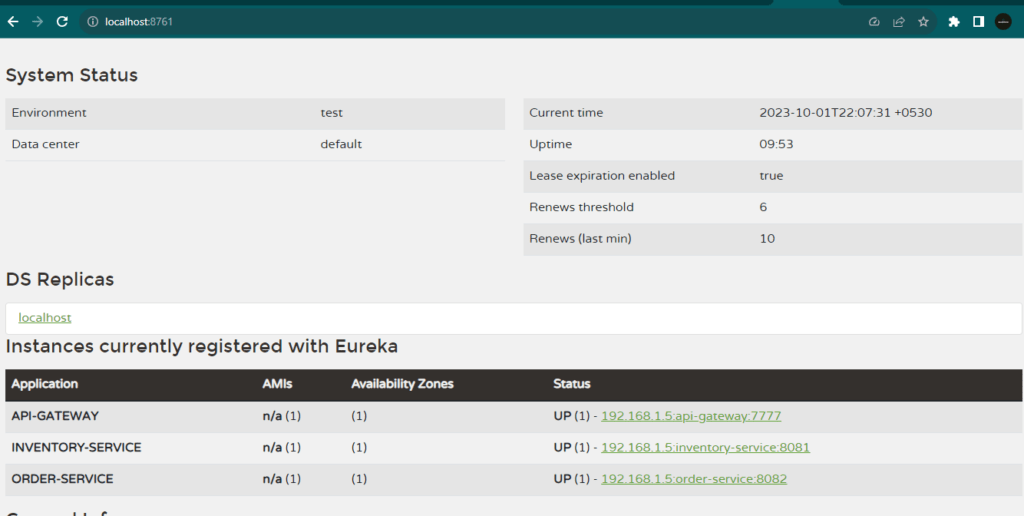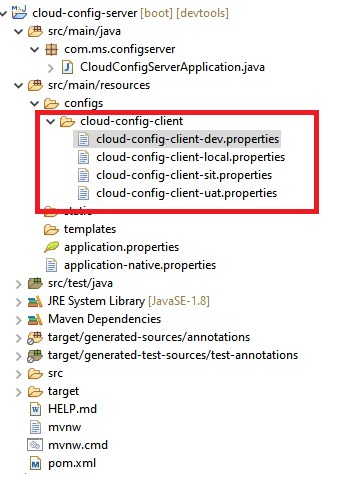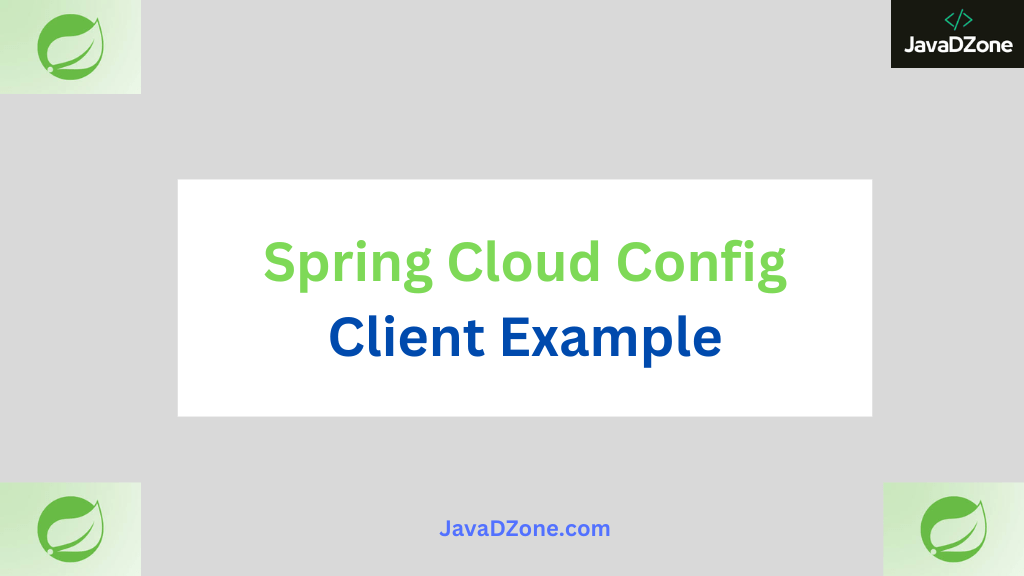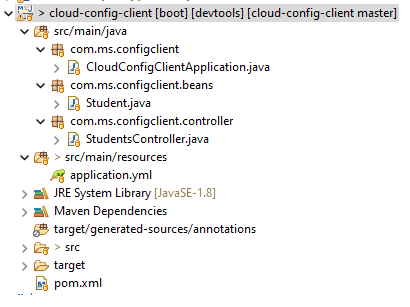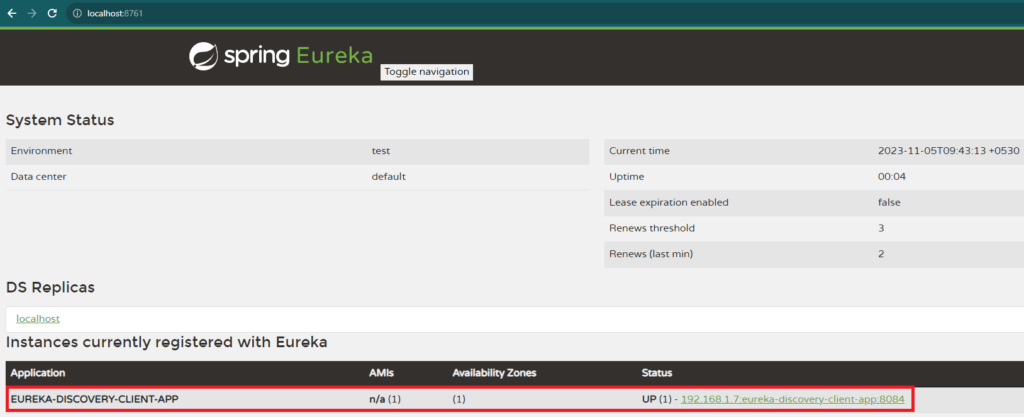Microservices architecture has become a popular choice for building scalable and maintainable applications. If you’re preparing for an interview in this field, you’ll need to be well-versed in both theoretical concepts and practical applications. In this blog post, we’ll cover some of the most common Top Microservices Interview Questions and Answers, complete with detailed answers and examples.
Top Microservices Interview Questions and Answers:
1. What are Microservices?
Answer: Microservices are an architectural style that structures an application as a collection of small, loosely coupled, and independently deployable services. Each service corresponds to a specific business capability and communicates with other services through APIs.
Example: Consider an e-commerce application where different microservices handle user authentication, product catalog, shopping cart, and payment processing. Each of these services can be developed, deployed, and scaled independently, allowing for greater flexibility and easier maintenance.
2. What are the main benefits of using Microservices?
Answer: The main benefits of microservices include:
- Scalability: Each service can be scaled independently based on its own load and performance requirements.
- Flexibility: Different services can be built using different technologies and programming languages best suited to their tasks.
- Resilience: Failure in one service doesn’t necessarily affect the entire system, improving overall system reliability.
- Deployment: Independent deployment of services enables continuous delivery and faster release cycles.
Example: In a microservices-based e-commerce system, the payment service might experience higher load than the product catalog service. Scaling the payment service independently ensures that the entire system remains responsive and stable.
3. How do you handle communication between Microservices?
Answer: Microservices communicate through various methods, including:
- HTTP/REST APIs: Commonly used for synchronous communication. Services expose RESTful endpoints that other services can call.
- Message Queues: For asynchronous communication. Systems like RabbitMQ or Kafka are used to pass messages between services without direct coupling.
- gRPC: A high-performance RPC framework that uses HTTP/2 for communication, suitable for low-latency and high-throughput scenarios.
Example: In a microservices-based application, the user service might expose a REST API to retrieve user information, while the order service might use a message queue to send order events to the inventory service for updating stock levels.
4. What are some common challenges with Microservices?
Answer: Common challenges include:
- Complexity: Managing and orchestrating multiple services increases system complexity.
- Data Management: Handling distributed data and ensuring consistency across services can be challenging.
- Latency: Network communication between services can introduce latency compared to in-process calls.
- Deployment: Coordinating the deployment of multiple services requires robust DevOps practices and tooling.
Example: In a microservices architecture, ensuring that all services remain in sync and handle eventual consistency can be difficult, especially when dealing with distributed databases and transactions.
5. How do you ensure data consistency in a Microservices architecture?
Answer: Data consistency in a microservices architecture can be managed using:
- Eventual Consistency: Accepting that data will eventually become consistent across services. Techniques like event sourcing and CQRS (Command Query Responsibility Segregation) are used.
- Distributed Transactions: Using tools like the Saga pattern to manage transactions across multiple services. This involves coordinating a series of local transactions and compensating for failures.
- API Contracts: Defining clear API contracts and data validation rules to ensure consistency at the service boundaries.
Example: In an e-commerce system, when a customer places an order, the order service updates the order status, the inventory service adjusts stock levels, and the notification service sends a confirmation email. Using event-driven communication ensures that each service updates its data independently and eventually all services reflect the same state.
6. What is the role of API Gateway in Microservices?
Answer: An API Gateway acts as a single entry point for all client requests and manages routing to the appropriate microservice. It handles various cross-cutting concerns such as:
- Load Balancing: Distributes incoming requests across multiple instances of services.
- Authentication and Authorization: Centralizes security management and enforces policies.
- Request Routing: Directs requests to the correct microservice based on the URL or other criteria.
- Aggregation: Combines responses from multiple services into a single response for the client.
Example: In a microservices-based application, an API Gateway might route requests to different services like user management, order processing, and payment handling. It can also provide caching, rate limiting, and logging.
7. How do you handle versioning of Microservices APIs?
Answer: API versioning can be handled through several strategies:
- URL Versioning: Including the version number in the URL (e.g.,
/api/v1/users). - Header Versioning: Using HTTP headers to specify the API version.
- Query Parameter Versioning: Passing the version number as a query parameter (e.g.,
/api/users?version=1).
Example: Suppose you have a user service with a /users endpoint. To support new features without breaking existing clients, you might introduce a new version of the API as /users/v2, while the old version remains available at /users/v1.
8. What are the best practices for testing Microservices?
Answer: Best practices for testing microservices include:
- Unit Testing: Testing individual services in isolation.
- Integration Testing: Testing the interaction between multiple services and verifying the data flow.
- Contract Testing: Ensuring that services adhere to defined API contracts using tools like Pact.
- End-to-End Testing: Testing the complete system to ensure that all services work together as expected.
Example: For an e-commerce application, unit tests might cover individual services like the order service, while integration tests would check interactions between the order service and payment service. Contract tests ensure that the order service correctly implements its API contract, and end-to-end tests verify that the complete order process functions correctly.
9. How do you monitor and log Microservices?
Answer: Monitoring and logging in a microservices architecture involve:
- Centralized Logging: Aggregating logs from all services into a central system using tools like ELK Stack (Elasticsearch, Logstash, Kibana) or Fluentd.
- Distributed Tracing: Tracking requests as they pass through multiple services using tools like Jaeger or Zipkin.
- Metrics Collection: Collecting performance metrics and health indicators using tools like Prometheus and Grafana.
Example: In an e-commerce system, centralized logging can help you trace an error occurring in the payment service by aggregating logs from all related services. Distributed tracing can show how a request flows from the user service through the order service to the payment service, helping identify bottlenecks or failures.
10. What is the difference between Monolithic and Microservices architectures?
Answer: The key differences are:
- Monolithic Architecture: A single, unified application where all components are tightly coupled and run as a single process. Changes and deployments affect the entire application.
- Microservices Architecture: An application is divided into small, independent services, each responsible for a specific functionality. Services are loosely coupled, allowing independent deployment and scaling.
Example: In a monolithic e-commerce application, all features (user management, product catalog, etc.) are part of a single codebase. In a microservices architecture, these features are separated into individual services that can be developed, deployed, and scaled independently.
11. How do you handle inter-service communication in Microservices?
Answer: Inter-service communication in microservices can be handled using several methods, each with its benefits and trade-offs:
- HTTP/REST: This is a common choice for synchronous communication. Services expose RESTful APIs that other services call directly. It is simple and widely supported but can introduce latency and be subject to network issues.Example: The order service may use a REST API to fetch user details from the user service by sending an HTTP GET request to
/users/{userId}. - gRPC: gRPC is a high-performance RPC framework using HTTP/2. It supports synchronous and asynchronous communication with strong typing and code generation, making it suitable for low-latency scenarios.Example: A product service might use gRPC to communicate with the inventory service to check stock levels efficiently.
- Message Queues: For asynchronous communication, message brokers like RabbitMQ, Kafka, or ActiveMQ allow services to publish and consume messages. This decouples services and helps with load balancing and resilience.Example: The order service could publish an “order placed” event to a message queue, which the inventory service consumes to update stock levels.
- Event Streams: Systems like Kafka allow services to publish and subscribe to event streams. This is useful for event-driven architectures where services react to changes or events.Example: The shipping service might listen to events from Kafka to start processing orders when a “payment completed” event is received.
12. How do you handle versioning of Microservices APIs?
Answer: API versioning in microservices ensures backward compatibility and smooth transitions between versions. Common strategies include:
- URL Versioning: Including the version number in the URL path (e.g.,
/api/v1/users). This is straightforward and easy to understand but can lead to version proliferation.Example:/api/v1/ordersvs./api/v2/orders - Header Versioning: Using custom HTTP headers to specify the API version (e.g.,
Accept: application/vnd.myapi.v1+json). This keeps URLs clean but requires clients to handle headers correctly.Example: Clients send requests with headers likeX-API-Version: 2. - Query Parameter Versioning: Including the version in the query parameters (e.g.,
/api/users?version=1). It’s less common but can be useful in some scenarios.Example:/api/orders?version=1 - Content Negotiation: Using the
Acceptheader to negotiate the API version based on media type.Example:Accept: application/vnd.myapi.v1+json
13. What is the role of an API Gateway in Microservices?
Answer: An API Gateway serves as a single entry point for all client requests and offers several critical functions:
- Routing: Directs requests to the appropriate microservice based on URL or other criteria.Example: Routing
/api/usersrequests to the user service and/api/ordersrequests to the order service. - Load Balancing: Distributes incoming requests across multiple instances of a service to ensure even load distribution.
- Authentication and Authorization: Handles security concerns by validating tokens or credentials before forwarding requests to microservices.
- Caching: Caches responses to reduce latency and load on backend services.
- Logging and Monitoring: Aggregates logs and metrics from various services to provide visibility into system performance and health.
14. What are the best practices for designing Microservices?
Answer: Best practices for designing microservices include:
- Single Responsibility Principle: Each service should focus on a single business capability or domain.Example: A payment service should only handle payment-related tasks and not include order management.
- Decentralized Data Management: Each service manages its own data store to avoid tight coupling and facilitate scaling.
- API Contracts: Define clear and versioned API contracts to ensure that services interact correctly.
- Resilience: Implement retry logic, circuit breakers, and failover mechanisms to handle service failures gracefully.
- Scalability: Design services to be stateless where possible, allowing them to scale horizontally.
15. How do you manage configuration in a Microservices environment?
Answer: Managing configuration in a microservices environment involves:
- Centralized Configuration: Use tools like Spring Cloud Config or Consul to manage configurations centrally. This ensures consistency across services and simplifies updates.Example: Storing database connection strings, API keys, and feature flags in a central configuration server.
- Environment-Specific Configuration: Separate configurations for different environments (development, staging, production) and load them dynamically based on the environment.Example: Using environment variables or configuration profiles to load specific settings for each environment.
- Service Discovery Integration: Integrate configuration management with service discovery to dynamically adapt to changing service locations and instances.
16. What is the Saga pattern, and how does it work?
Answer: The Saga pattern is a pattern for managing long-running and distributed transactions across microservices. It involves:
- Sequence of Transactions: Breaking a large transaction into a sequence of smaller, isolated transactions, each managed by different services.
- Compensating Transactions: Implementing compensating actions to undo the effects of a transaction if subsequent transactions fail.
Example: In an e-commerce system, a saga might manage an order placement by performing payment processing, updating inventory, and sending a confirmation email. If payment fails, compensating transactions roll back the inventory update.
17. How do you handle service orchestration and choreography?
Answer:
- Service Orchestration: A central service or orchestrator coordinates and manages the interactions between services. This can be achieved using an orchestration engine or workflow management system.Example: Using a tool like Apache Airflow to coordinate a complex workflow that involves multiple microservices.
- Service Choreography: Each service knows how to interact with others and manages its own interactions. Services communicate through events or messages and react to changes in the system.Example: An order service emitting events to a Kafka topic, which are consumed by inventory and shipping services to perform their tasks.
18. How do you ensure data consistency in Microservices?
Answer: Ensuring data consistency in microservices involves:
- Eventual Consistency: Accepting that data may not be immediately consistent across services but will eventually converge. Implement techniques like CQRS (Command Query Responsibility Segregation) and event sourcing.Example: Using a message broker to propagate changes and ensure that all services eventually have the same data.
- Distributed Transactions: Using patterns like the Saga pattern or Two-Phase Commit (2PC) for managing transactions across multiple services.
- Data Replication: Replicating data across services to maintain consistency, though this can be complex and requires careful management.
19. What are some common tools and technologies used in Microservices architecture?
Answer: Common tools and technologies in microservices architecture include:
- Service Discovery: Consul, Eureka, Zookeeper
- API Gateway: Kong, NGINX, AWS API Gateway
- Message Brokers: Kafka, RabbitMQ, ActiveMQ
- Configuration Management: Spring Cloud Config, Consul, Vault
- Monitoring and Logging: Prometheus, Grafana, ELK Stack (Elasticsearch, Logstash, Kibana)
- Containers and Orchestration: Docker, Kubernetes, Docker Swarm
Example: Deploying microservices in Docker containers and using Kubernetes for orchestration and management.
20. How do you handle security concerns in a Microservices architecture?
Answer: Handling security in a microservices architecture involves:
- Authentication: Implementing centralized authentication using OAuth2 or OpenID Connect. Each service should verify tokens or credentials provided by the API Gateway.
- Authorization: Ensuring that users or services have appropriate permissions for accessing resources.
- Data Encryption: Encrypting data in transit and at rest to protect sensitive information. Use TLS/SSL for data in transit and encryption algorithms for data at rest.
- API Security: Securing APIs using rate limiting, IP whitelisting, and input validation to prevent abuse and attacks.
Example: Using OAuth2 for securing APIs and TLS for encrypting communication between services.
21. What is the Circuit Breaker pattern, and why is it important?
Answer: The Circuit Breaker pattern prevents a service failure from impacting other services by stopping requests to a failing service and allowing it time to recover. It operates in three states:
- Closed: Requests are allowed to pass through, and the circuit monitors for failures.
- Open: Requests are blocked to avoid further strain on the failing service.
- Half-Open: A limited number of requests are allowed to pass through to test if the service has recovered.
Example: If a payment service is down, a circuit breaker prevents further requests to this service, allowing it to recover and preventing cascading failures in the order processing and inventory services.
22. What is the Strangler Fig pattern?
Answer: The Strangler Fig pattern is a migration technique from a monolithic application to a microservices architecture. It involves incrementally replacing parts of the monolith with microservices, while keeping both systems running until the migration is complete.
Example: In transitioning from a monolithic e-commerce application, you might start by creating a separate user management microservice. Gradually, extract other functionalities like product catalog and order management, updating the monolithic application to route requests to these new services.
23. How do you handle security in a Microservices architecture?
Answer: Security in microservices involves several strategies:
- Authentication: Use mechanisms like OAuth2 or JWT to authenticate users or services.
- Authorization: Ensure users or services have the correct permissions to access specific resources.
- Data Encryption: Encrypt data both in transit using TLS/SSL and at rest to protect sensitive information.
- Service-to-Service Security: Use mutual TLS or API keys for secure communication between services.
Example: An e-commerce system might use OAuth2 for user authentication, JWT for transmitting user identity, and HTTPS for securing API calls.
24. What is the difference between synchronous and asynchronous communication in Microservices?
Answer:
- Synchronous Communication: The calling service waits for a response from the called service before proceeding. Commonly implemented with HTTP/REST or gRPC.Example: The order service synchronously calls the payment service to process a payment and waits for confirmation before proceeding.
- Asynchronous Communication: The calling service sends a message or event and continues without waiting for a response. Often implemented with message queues or event streams.Example: The order service publishes an event to a message queue, which the inventory and shipping services process independently.
25. What are some strategies for handling distributed transactions in Microservices?
Answer: Strategies for managing distributed transactions include:
- Saga Pattern: A sequence of local transactions coordinated to ensure consistency. If a transaction fails, compensating transactions are triggered to undo the effects.Example: When processing an order, a saga might involve payment, inventory update, and shipping. If payment fails, compensating actions reverse the inventory and order changes.
- Two-Phase Commit (2PC): A protocol where a coordinator ensures all participating services agree on the transaction outcome. Less commonly used due to complexity and performance issues.
26. How do you handle service discovery in Microservices?
Answer: Service discovery helps locate service instances dynamically and involves:
- Service Registries: Tools like Consul, Eureka, or Zookeeper maintain a registry of service instances and their addresses.Example: An API Gateway might query a Consul registry to route requests to the appropriate service instance.
- DNS-Based Discovery: Uses DNS to resolve service names to IP addresses, with updates as services scale or move.
27. How do you manage configuration in Microservices?
Answer: Configuration management involves:
- Centralized Configuration: Tools like Spring Cloud Config or HashiCorp Consul manage configurations centrally for consistency and easier updates.Example: An application might use Spring Cloud Config to store and distribute configuration properties for different environments.
- Environment-Specific Configuration: Maintain separate configurations for development, staging, and production environments.
28. What is API Gateway and what role does it play in Microservices?
Answer: An API Gateway provides a unified entry point for client requests and performs several functions:
- Routing: Directs requests to the appropriate microservice.
- Aggregation: Combines responses from multiple services into a single response.
- Cross-Cutting Concerns: Handles security, rate limiting, caching, and logging.
Example: An API Gateway in an e-commerce platform might route requests for user, product, and order information to the respective microservices and provide a consolidated API for clients.
29. How do you ensure high availability and fault tolerance in Microservices?
Answer: Strategies for ensuring high availability and fault tolerance include:
- Load Balancing: Distribute incoming requests across multiple service instances using tools like NGINX or HAProxy.
- Failover: Automatically switch to backup instances or services in case of failure.
- Redundancy: Deploy multiple instances of services across different servers or data centers.
- Health Checks: Regularly monitor the health of services and take corrective actions if a service is unhealthy.
Example: Deploying multiple instances of each microservice behind a load balancer ensures that if one instance fails, traffic is routed to healthy instances, maintaining service availability.
Conclusion
Understanding these additional microservices interview questions and answers will further prepare you for discussions on designing, implementing, and maintaining microservices architectures. Mastering these concepts demonstrates your ability to handle complex, distributed systems and ensures you’re ready for a variety of scenarios in a microservices environment.
Good luck with your interview preparation!



